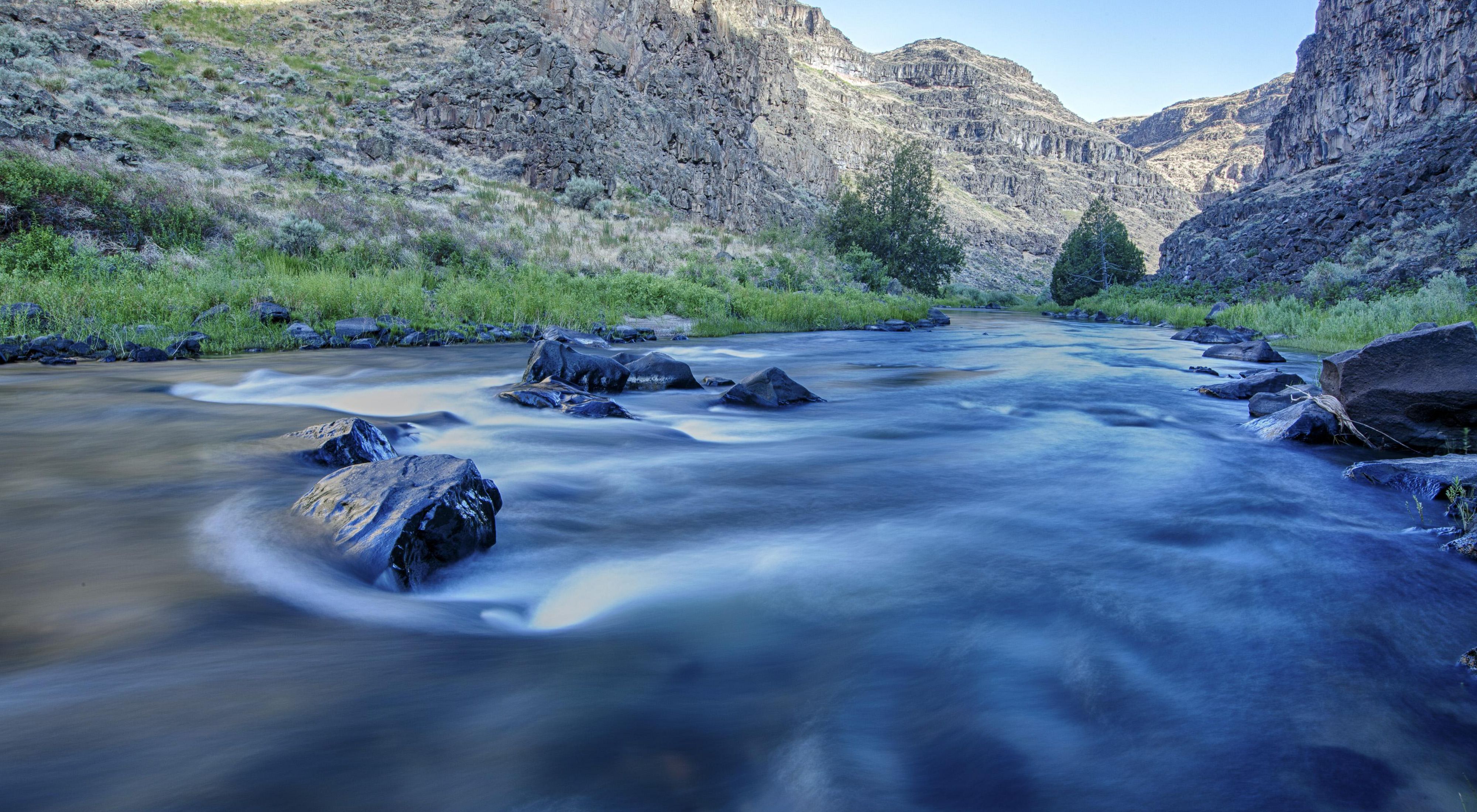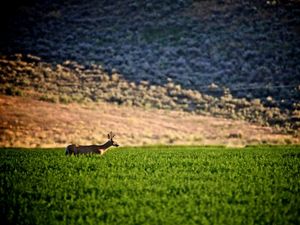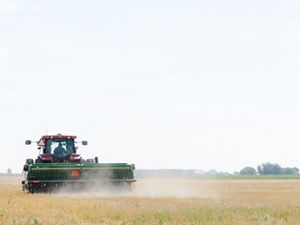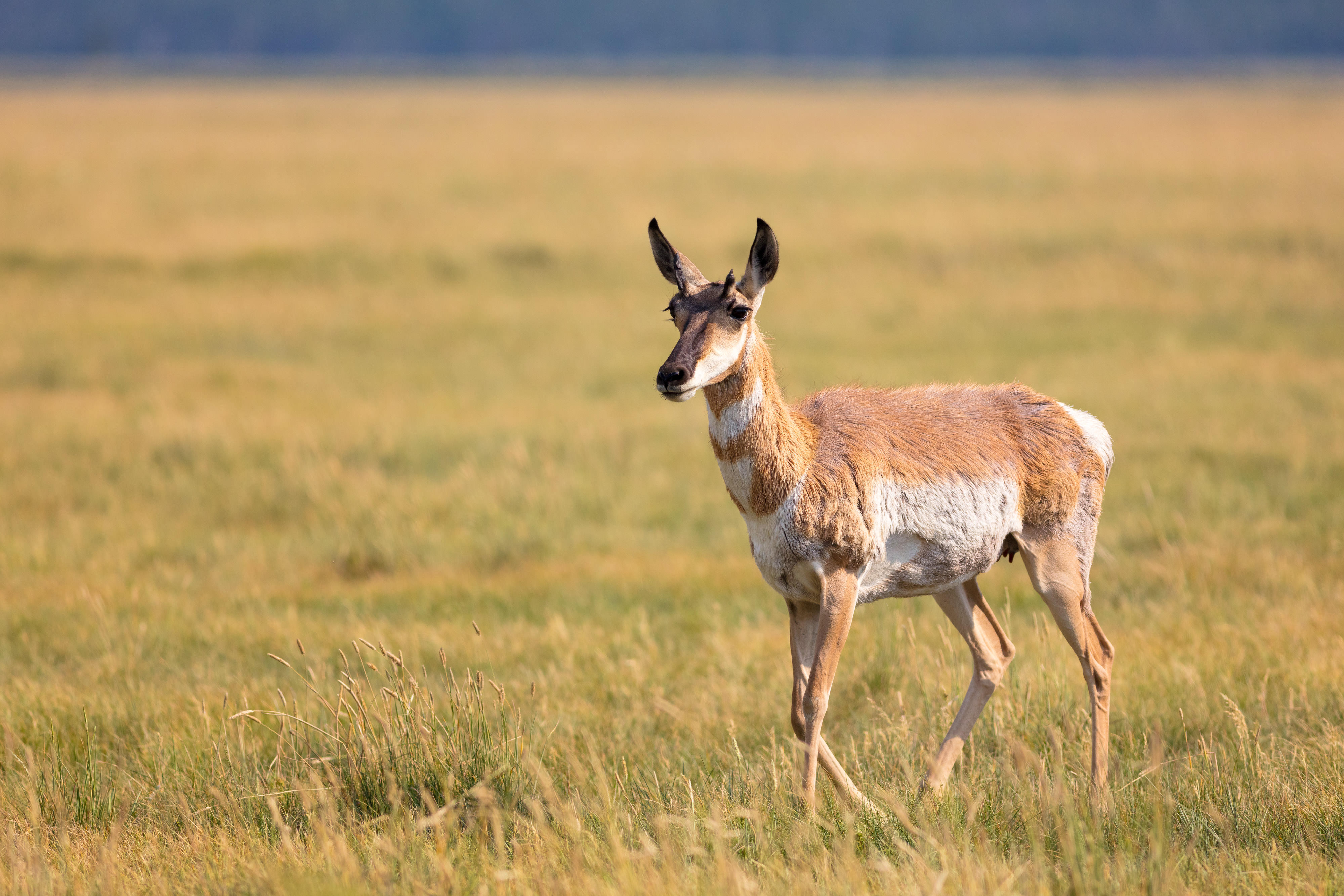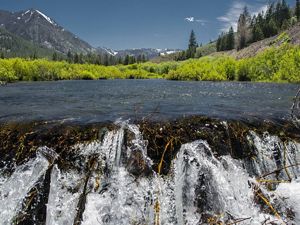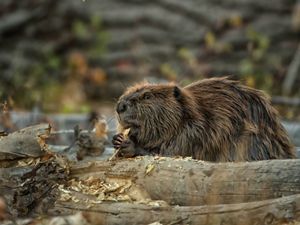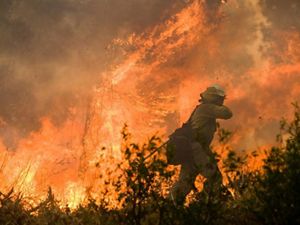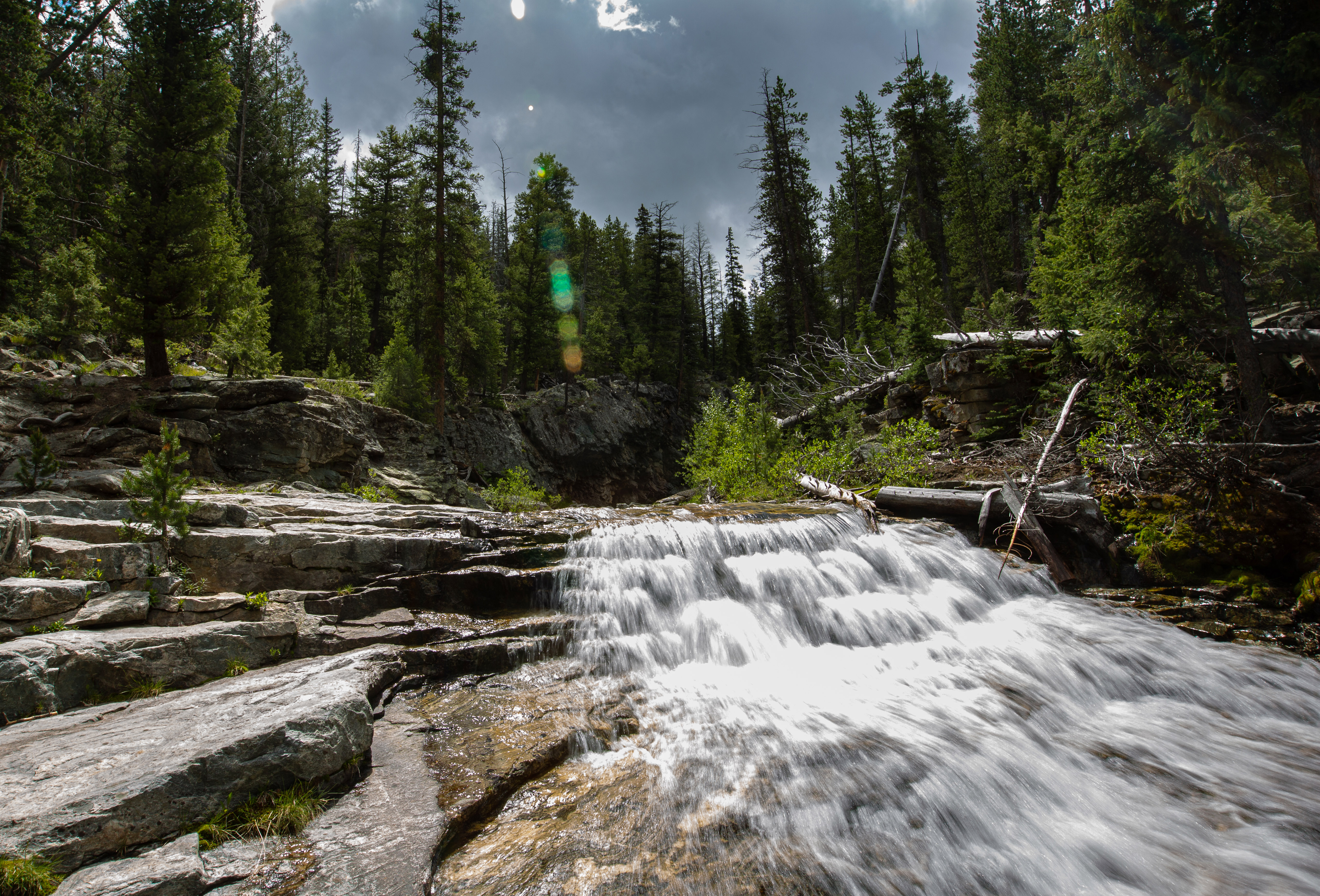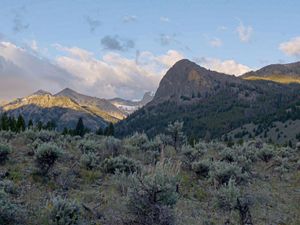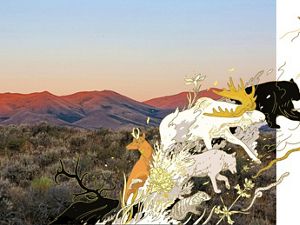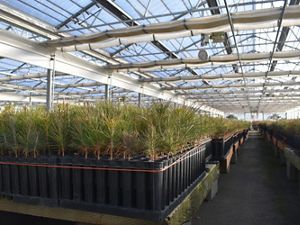The place we love is at a turning point.
If Idaho’s mountain ranges, crystal streams, forests or rangelands have ever taken your breath away, you know the feeling: The landscapes here call to us. Nourish us. Inspire us.
Yet climate change, population growth and a legacy of poor land and water management have brought Idaho to a pivotal moment. There is still time to save the extraordinary natural beauty and vital ecosystems that make our state a special place.
But only if we act together, act smart and act now.
Quote: Mark Menlove
Our fate and the fate of the natural world are inextricably linked ... One of the things that sets The Nature Conservancy apart is that we take a holistic approach to the complex and interconnected issues we face.
Regenerative Agriculture and Resilient Waters
Agriculture has a major impact on Idaho’s economy, resources and people. In 2017, agribusiness accounted for 13% of the gross state product, 18% of total sales and 123,000 jobs. Most of Idaho’s population of 1.7 million lives in the Snake River Plain, where most of Idaho’s storage water and agricultural land is located.
To sustainably feed a growing world population and support both a healthy environment and thriving communities, we need more Idaho farmers to employ regenerative agriculture. Practices such as planting cover crops and reducing tillage can build healthier soil, which in turn can increase yield and long-term profits. Healthier soil also stores more carbon. Regenerative agriculture is a natural climate solution we can deploy right now to help mitigate climate change, with no technological breakthroughs or policy debates required. Growing food regeneratively also has the potential to improve water quality and reduce water use.
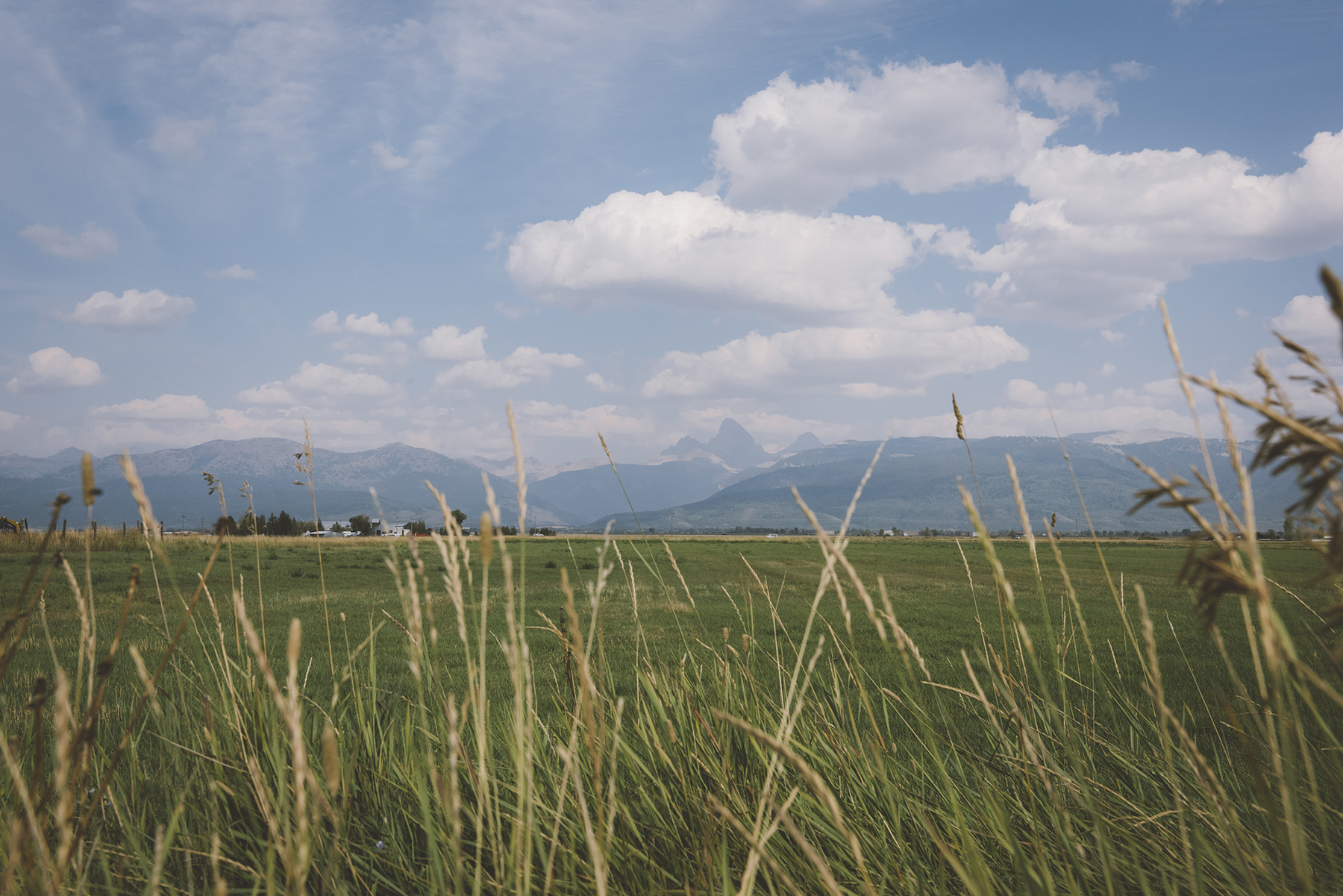
Project Highlight
Teton Creek Land & Water Project
Fed by snowmelt from the vast, interconnected mountain ranges of the Greater Yellowstone Ecosystem, the Upper Snake River basin includes some of the most iconic and ecologically significant freshwater systems in the American West. The basin provides some of the “last best” strongholds for Yellowstone Cutthroat Trout anywhere, and it carries critical water resources for farmers.
Yet, the pressures facing the region’s freshwater systems are daunting. Water demand continues to heighten as drought conditions become more prominent due to rising temperatures and climate variability.
After years of laying the groundwork, TNC recently protected the 1,000-acre Huntsman farm in the heart of the Teton Valley. The property includes agricultural fields, undeveloped lands and a portfolio of water assets. This acquisition offers opportunities to develop innovative water mechanisms to keep more water in the creek at critical times for native trout while still meeting agriculture needs. TNC will also place conservation easements on portions of the property, permanently protecting some of the Teton Valley’s last over-wintering habitat and a critical migration corridor for elk. Additionally, TNC will use this property to test high-elevation regenerative agricultural practices.
Land and Water Conservation
At its core, Idaho is wild. Our state has more miles of whitewater rivers than any state in the Lower 48, more peaks over 10,000 feet than any other state in the Rockies, and rich habitat for salmon, grizzlies, wolverine, pronghorn, sage grouse and thousands of other species. More than a third of our 35 million public acres are protected and roadless.
Private lands are an integral part of this wilderness. They connect our vast landscapes, providing precious, high-quality habitat for seasonal migrations and for wildlife to rear their young. They are the sources of cold, clear water for salmon and steelhead streams. And, they are places where farmers and ranchers earn their livelihoods. When connected, many of these landscapes and freshwater systems serve as climate refuges, natural strongholds that will be critically important for fish, wildlife and communities in a changing climate. Yet these lands and waters are under pressure. By conserving key lands and waters, we can keep our state wild while also sustaining our economies and communities.
Project Highlight
Pioneer Mountains
From the Pioneer Mountains to the Craters of the Moon lies a relatively unknown and largely unspoiled natural area in Central Idaho. Spanning 2.4 million acres of diverse terrain, including lava beds, high desert, rivers and alpine forests, the Pioneers to Craters area was identified by TNC scientists as one of the most climate-resilient places in the Pacific Northwest. At its lower edge is a sagebrush sea dotted with springs and aspen groves. At its high point is Idaho’s third highest mountain peak. Wildlife thrive across this diverse range, among them migrating pronghorn, wolverine and greater sage-grouse.
It is against this backdrop that generations of ranchers and farmers have made homes and livelihoods, guided by a respect for the land and what it provides. In the early 2000s, residents, government agencies and nonprofits took on the monumental task of conserving much of the private land in the area through an effort known as the Pioneers Alliance. TNC Idaho set a goal of conserving 100,000 acres of private lands that were critical connections to public lands in this area.
To date, TNC and its partners in the Pioneers Alliance have conserved more than 95,000 acres—closing in on the overall goal and vision to keep the Pioneers to Craters whole, thriving and resilient to climate change.
Climate Action
Idaho’s climate is changing because of human-caused greenhouse gas emissions, and the changes are already being felt in our communities and the health of our lands and waters. As temperatures increase, we’re witnessing an increase in the frequency and severity of wildfires, along with changes in snowpack and the timing of the seasons—all of which have serious consequences for human and natural communities. We’re implementing natural climate solutions, which reduce and sequester greenhouse gasses, in our conservation programs. But reducing human-caused emissions is also critical. By mobilizing Idahoans to do so, we have an opportunity to avoid the worst effects of climate change.
Project Highlight
Idahoans Care About Climate
TNC is dedicated to protecting our land, water and communities by finding practical solutions to climate change. In February 2020, TNC conducted a statewide poll of 500 Idaho voters to better understand how Idahoans view climate change. The results indicate that Idahoans are ready for climate action. Nearly two-thirds of Idaho voters think climate change will harm future generations, and 64% think it can be solved by working together.
This poll was followed by a public opinion survey in June 2021 asking likely voters in North Idaho about forests and climate change. The results show two-thirds of voters see Idaho’s forests as an opportunity to help solve climate change.
TNC is using these results to engage policymakers, industry leaders and local communities in solutions-based dialogue to bolster support for policy that benefits Idaho’s natural environments and brings people together to build a stronger, climate-resilient future for all Idahoans.
Case Statements
- Regenerative Agriculture and Resilient Waters (.pdf)
- Conserving Land and Water (.pdf)
- Climate Action (.pdf)
- Restoring Forests (.pdf)
Project Highlights
- Silver Creek (.pdf)
- Farm Partnerships (.pdf)
- Teton Creek Land & Water (.pdf)
This Is Our Moment
Now more than ever we need innovative solutions to the challenges facing Idaho. If you love this place and want to take meaningful steps to protect it, we invite you to join us.

